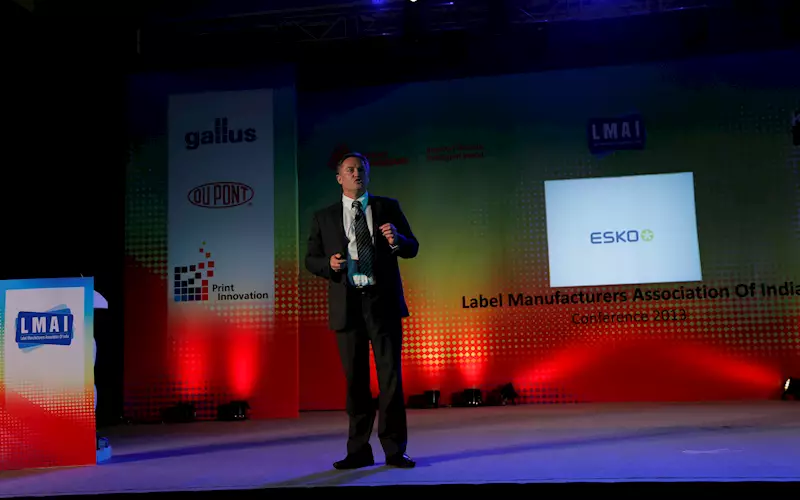During the LMAI Conference in Goa, Peter Henderson highlighted key trends in the Indian label flexo terrain. Addressing an audience that comprised CEOs of the top label print firms in India, he stressed on consolidation, shorter run lengths, flexo and digital growing, automation, error reduction, MIS systems (JDF / JMF) / single point of entry, web based approval systems to improve communication, contract proofing and 3D web-based proofing, and data management.
Henderson focussed on improvements in pre-press that have enable zero errors. These include: dedicated pre-press “plug in” technology; trapping, barcodes, viewing; improvements in trapping; preflight tools to check file printability; press simulation; visualise flexo plates on screen, check highlight breaks, avoid scum dots, automatically correct images for flexo; dedicated tools for shrink sleeve labels; white under print support and stepping solutions for combination presses.
Henderson did a brief comparison between flat top dots and round top dots; and the pros-cons of the two methods for improvements in highlights and solid ink densities.
He mentioned how label converters in India are opting for a newer breed of presses. These included: presses where the die change can be less than a minute; more units which are easier to operate and with quicker change-over (with typically six-eight job changes per day). Henderson said, most presses are sold with eight print stations' and customers who opted for 150# are preferring 175# and 200#. He added, label firms prefer an anilox 1000–1200 for image work and 600-800 for solids. And finally, firms are seeking hi-fidelity printing which is possible through a fixed set of inks (cartons and flexible).
He spoke at length about the advances in proofing. He said, "today, there is no need to proof on the press." This is possible due to colour accurate contract proofs and clear substrate support. In addition, remote proofing is available. And print firms are deploying verification tools, plus using certified inks and paper; and creating automatic report generation.
He underscored the importance of 3-D proofing whereby artworks can be created in 3D and graphics can be directly placed on the shape. This can be done through 3D PDFs which can rotate and view since there is an Adobe Acrobat support. This supports textured
substrates; embossing; lighting effects and even foils on the job.












 See All
See All